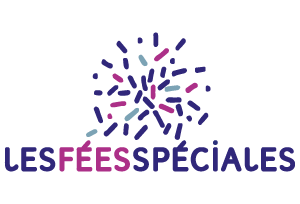GP Triangulation is a suite of algorithms we developed to convert a 2D drawing into a 3D shape. This allows us to combine the ease and speed of 2D drawing with the more complex and realistic rendering of 3D.
To illustrate, we can transform these drawings on the left around the character, known as smears, into felt-like models on the right.
Smears are a traditional animation technique used to compensate for the limited number of animated frames by drawing streaks or duplicating parts that are moving rapidly on screen. It’s a stylistic effect that compensates for the absence of motion blur naturally present in live-action filming.
The drawings are then transformed into 3D models, allowing them to receive materials and lighting that match the scene’s requirements. 2D smears are much faster to produce than equivalent 3D models.
The main challenge is transforming a drawing, which can be made up of several elements (several filled shapes, closed or not, or simple lines) and turning it into a clean 3D model. Without these complex assembly techniques, the resulting 3D model would look rough. As a result, it would be difficult or impossible to render beautifully.
In this other test, we increased the difficulty with a fully animated sequence with many drawings. The method, which we have refined, is then applied to achieve a cut-out paper effect.
The original 2D sequence
The 3D rendering obtained from the 2D materials
You can compare the before/after results here, even though this work is still in progress and hasn’t undergone any compositing treatment to further improve its rendering.
This page explains the overall concept, which is broken down into several resources and tool :
- The basics are described in an article on our blog.
- A presentation at the Blender Conference 2022 explaining part of the GP Powertools solutions showcases the work from 2022.
- The current state was made public during the Blender Conference 2023.
